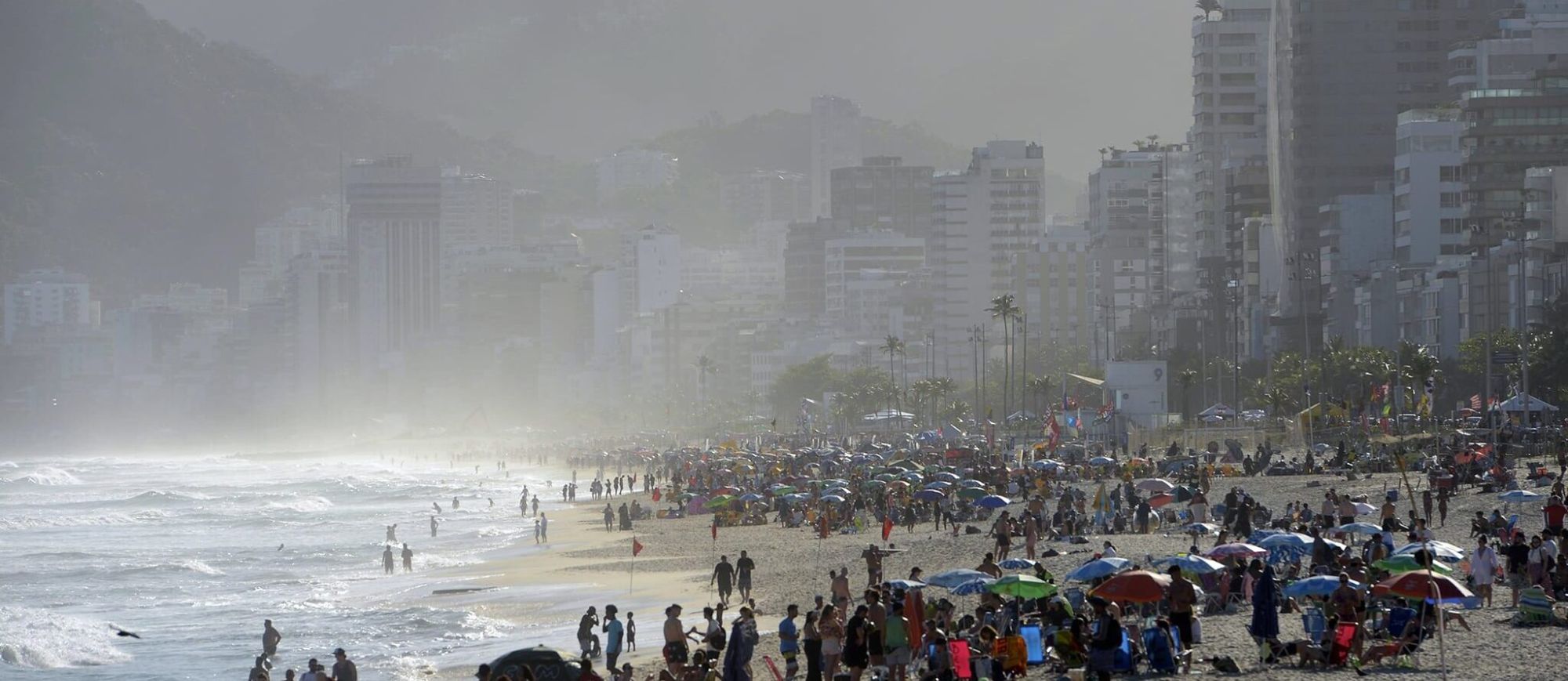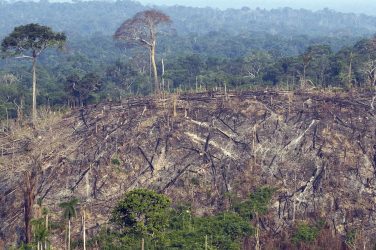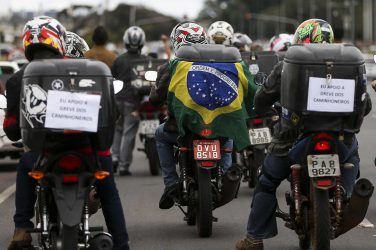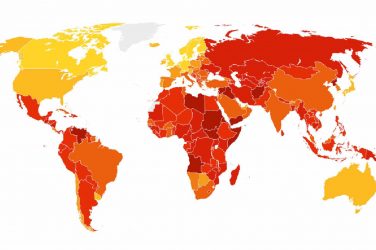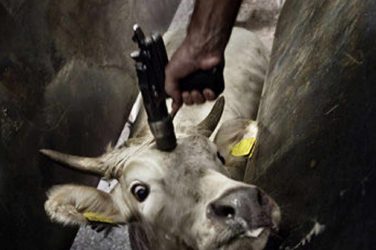Released in February 2022, the latest report prepared by the Intergovernmental Panel on Climate Change (IPCC) stressed that greenhouse gas emissions are increasing the frequency and intensity of extreme temperatures around the planet.
According to the report, each 1° Celsius (1.8° Fahrenheit) increase in average global temperature is expected to worsen these phenomena, which are responsible for droughts and floods as well as hunger and the deaths of countless people, animals and plants. Forecasts point to an average increase of 1.5°C (2.7°F) in temperatures by 2030 compared with the preindustrial era, even in an optimistic scenario of lower carbon emissions.
But how can we define “extreme” temperatures in a huge country like Brazil with such a diverse climate, and how can we identify patterns in these extremes to understand their effects in different regions?
Those questions are answered in a new study conducted by researchers from the Institute of the Sea (IMar) at the Federal University of São Paulo (Unifesp), which looked into extreme temperature patterns on the Brazilian coast. They measured impacts in terms of occurrences (days on which extremes occurred) and events (consecutive days with extremes, characterizing waves).
The work focused on data about air temperature collected every hour of the day over the last 40 years in five coastal areas of the country: São Luís (Maranhão), Natal (Rio Grande do Norte), São Mateus (Espírito Santo), Iguape (São Paulo) and Rio Grande (Rio Grande do Sul).
After four decades of measurements, the results of the analyses were disturbing since they pointed to an issue that had already been studied in other regions of the world, though evidence was scarce for the Brazilian coast.
In the country’s south and southeast — the most affected among the regions studied — the frequency of daily occurrences of extreme temperatures and heat waves increased by 188% in Espírito Santo, 100% in Rio Grande do Sul and 84% in São Paulo during the period.
The largest high temperature variation was recorded in Iguape, on the coast of São Paulo — from 29.5°C (85.1°F) in July 2000 to 40.4°C (104.7°F) in January 2016. In Espírito Santo, maximum temperatures ranged from 28.6°C (83.5°F) in July 1987 to 37.2°C (99°F) in March 2013. In the last decade, the state saw 19 occurrences of temperatures over 35°C (95°F) — more than twice the number seen in the 1990s.
“The study confirmed that extreme events are increasingly common in Brazil’s southeast and south. We expected that. But when we look at these variations, it’s been almost three times higher in Espírito Santo over 40 years, and it’s doubled in Rio Grande do Sul. That’s a lot,” says Ronaldo Christofoletti, head of research and a professor at IMar/Unifesp, who emphasizes the originality of the work and its aim to demystify climate extremes by showing them as numbers.
“Our major contribution was to answer the most basic question: What is a climate extreme? No reference value could be found. We generated a mathematical model that allows us to define what an extreme is, considering any point on the Brazilian coast for which we have long-term data.”
More heat waves, more cold waves
Two other measurements caught scientists’ attention. The coast of Espírito Santo saw an increase not only in the frequency of heat waves, but also of cold waves. On the coast of Rio Grande do Sul, in turn, the intensity of minimum temperatures has decreased; that is, it is getting less and less cold in southern Brazil.
In the Rio Grande area, where thermometers point to a trend toward higher minimum temperatures, they fell below 3°C (37.4°F) 21 times between 1989 and 1999. The previous decade had seen such temperatures only 12 times.
“Espírito Santo is subject to cold fronts that come from the south because the state is located in a subtropical area. But if you think of Rio Grande do Sul, where extreme low temperatures have decreased, it’s very worrying,” says marine biologist and first author of the study Fábio Sanches. “When I was younger, I used to hear that we would have problems related to global warming in the future. And that’s what we showed. The weather is going crazy and climate change is here,” he concludes.
The research also assessed the variation in thermal amplitude (lowest temperature minus highest temperature) throughout the day and between consecutive days, which are important parameters for predicting cold fronts.
The only region where daily thermal amplitude did not vary was the coast of Rio Grande do Norte. In Maranhão’s state capital São Luís, days with larger temperature variations are increasingly common, as well as consecutive days with that characteristic.
Temperature changes are even stronger in Brazil’s south and southeast. In addition to more days with greater thermal amplitude, the areas analyzed showed increasing daily thermal variation; that is, days with larger temperature differences are becoming more common.
Iguape has the most extreme thermal amplitude recorded on the same day, with a disturbing 17.9°C difference between the lowest and highest temperature in February 2018.
“That’s another surprising figure in our study that shows something that was going unnoticed because it doesn’t cause immediate mortality. But it undermines people’s health on a daily basis by messing with all viral cycles and the respiratory function, in addition to impacting the health of animals and plants. Seasons are not as defined as they used to be,” Christofoletti explains.
Reducing the greenhouse effect
Tackling the global climate crisis and transitioning to a low-carbon industry, building a bioeconomy and adopting new green technologies are emerging challenges. The IPCC report highlights the imbalance between the highest polluters: Families among the richest 10% emit more than 45% of greenhouse gases worldwide.
Having taken office at the climate change secretariat of Brazil’s Ministry of the Environment just over five months ago, economist Ana Toni, who holds a Ph.D. in political science, knows well how the environment-economy dichotomy can be unfair and must be overcome.
According to Toni, who quit her job as executive director of the Institute for Climate and Society to work for the administration of President Luiz Inácio Lula da Silva, her mission at the secretariat will be to discuss the climate from a development perspective, considering the importance of social issues.
“Economic powers are based on fossil fuels, on monoculture, and we want to transition to this other world. We have to look at the economy as a whole, from the perspective of the environment,” she says.
A member of Greenpeace’s board from 2010-17, Toni also highlights the challenge of making transversal policies, sharing responsibilities and building bridges with other ministries and the business sector.
“Combining the economy and the environment is not the real challenge,” she says. “I really think that this will be a matter of survival for businesses. The real challenge is to do that in a fairer way, considering inequality and the security of the most vulnerable people.”
Citation:
Sanches, F. H., Martins, F. R., Conti, W. R., & Christofoletti, R. A. (2023). The increase in intensity and frequency of surface air temperature extremes throughout the western south Atlantic coast. Scientific Reports, 13(1). doi:10.1038/s41598-023-32722-1
This article appeared originally in Mongabay. Read the original article here:
https://imgs.mongabay.com/wp-content/uploads/sites/20/2023/08/17100738/frio_praia_ipanema_rio_de_janeiro_tmazs_abr_20220901_0643-e1691080188219-2048×890.jpeg


